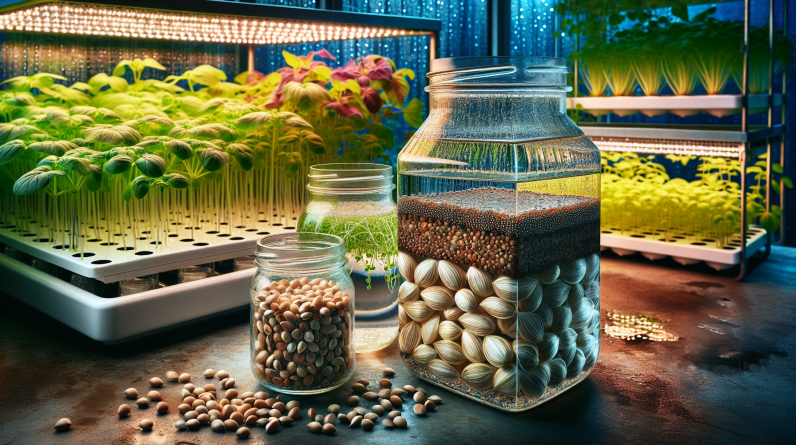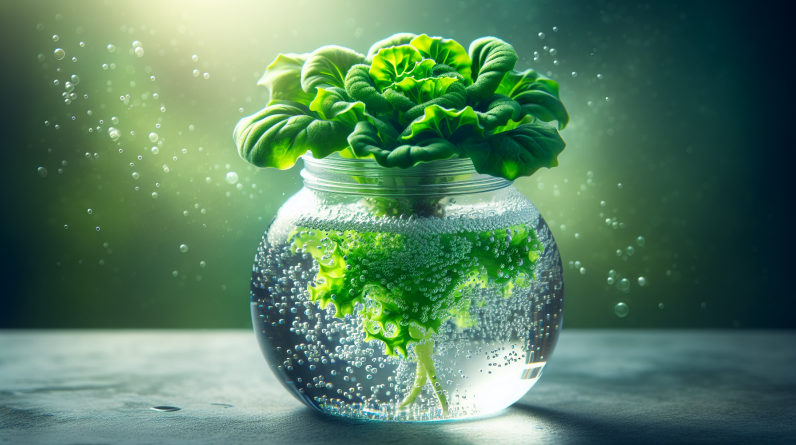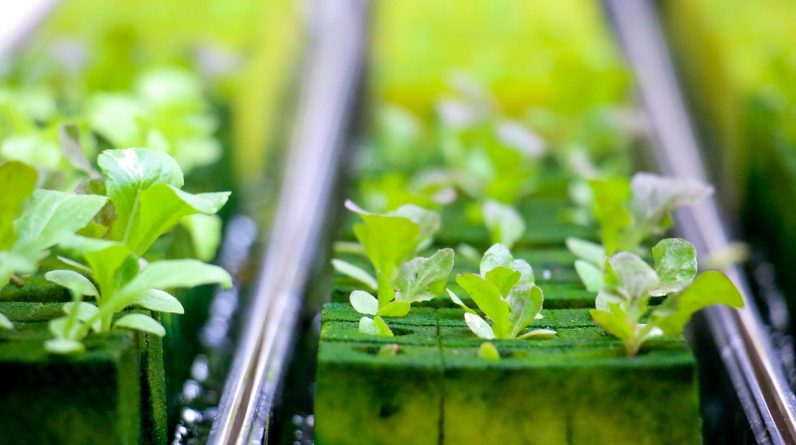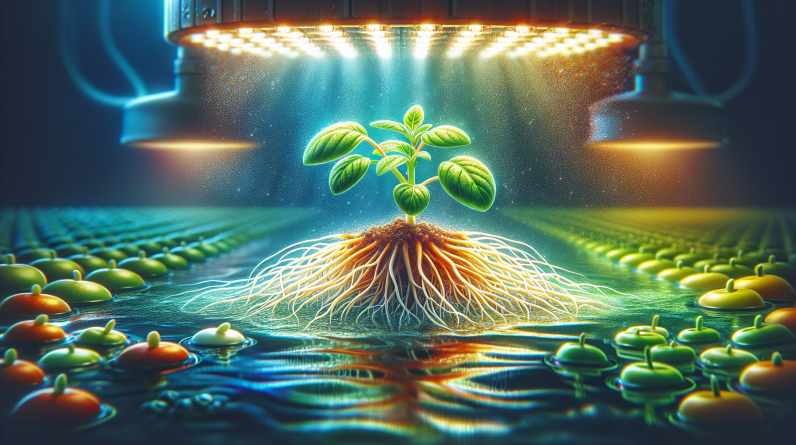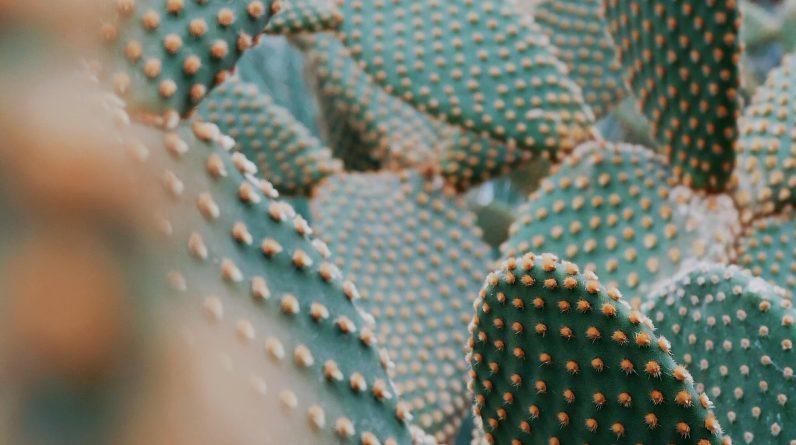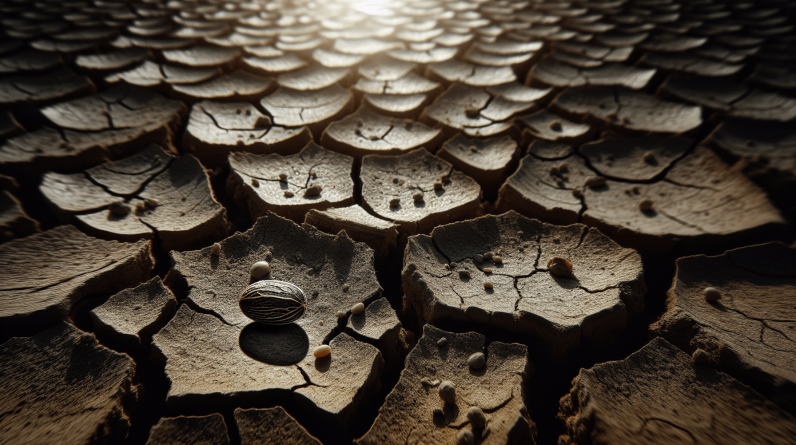
Have you ever planted seeds in your garden, eagerly waiting for them to sprout and grow, only to find that they simply refuse to germinate? It can be incredibly frustrating, but understanding the reasons behind this failure is crucial to successful gardening. In this article, we will explore the various factors that can prevent seeds from germinating and provide you with valuable tips to increase your chances of success. So, let’s unlock the secrets of nature’s magical process and uncover what makes seeds fail to germinate.
Environmental Factors
Temperature
Temperature plays a crucial role in seed germination. Each plant species has its own temperature range within which the seeds can germinate successfully. If the temperature is too high or too low, it can prevent seed germination altogether. Some seeds require specific temperature fluctuations, such as a period of cold temperatures (stratification) or warm temperatures (scarification), to break their dormancy and begin the germination process.
Moisture
Adequate moisture is essential for seed germination. A seed needs to absorb water in order to activate enzymes and initiate growth. If the soil or growing medium is too dry, the seeds may not receive enough moisture for germination to occur. Conversely, excessive moisture can lead to seed rot and fungal infections, which can inhibit or even prevent germination.
Light
While many seeds require darkness to germinate, some seeds need light to trigger germination. These light-dependent seeds have evolved to germinate near the soil surface, where light can penetrate. If these light-dependent seeds are buried too deep, they may fail to receive the necessary light stimulus for germination. On the other hand, light-intolerant seeds may fail to germinate if exposed to excessive light.
Oxygen
Just like other living organisms, seeds need oxygen to survive and germinate. Oxygen is essential for energy production during the germination process. If seeds are planted too deep in the soil, oxygen may not be readily available, leading to poor germination rates or even seedling mortality. Proper soil aeration is crucial to ensure that seeds have access to sufficient oxygen for successful germination.
Seed Quality
Age
The age of a seed can significantly impact its germination success. As seeds age, their viability decreases, meaning they are less likely to sprout and develop into healthy plants. Different seed species have different shelf lives, and it is important to use fresh seeds or properly store them to maintain their viability.
Viability
Seed viability refers to the ability of a seed to germinate and grow into a healthy plant. Seeds that are not viable will fail to germinate, resulting in poor or no plant growth. Viability can be affected by various factors, including age, storage conditions, and exposure to environmental stresses. Conducting a seed viability test before planting can help identify seeds with a high likelihood of successful germination.
Dormancy
Seed dormancy is a natural state in which seeds do not immediately germinate even under favorable conditions. Dormancy allows seeds to survive unfavorable conditions and ensures that germination occurs at the most opportune time. However, some seeds have prolonged or hard-to-break dormancy, resulting in germination failure. Techniques such as stratification (exposing seeds to cold temperatures) or scarification (physically breaking or weakening the seed coat) can help overcome dormancy and promote germination.
Coating or Shell
The seed coat or shell serves as a protective layer for the embryo inside the seed. In some cases, the seed coat can be too hard or impermeable, preventing water and gases from reaching the embryo. This can hinder germination. Physical or chemical treatments, like scarification or soaking in a mild acid solution, can be applied to weaken or remove the seed coat, facilitating germination.
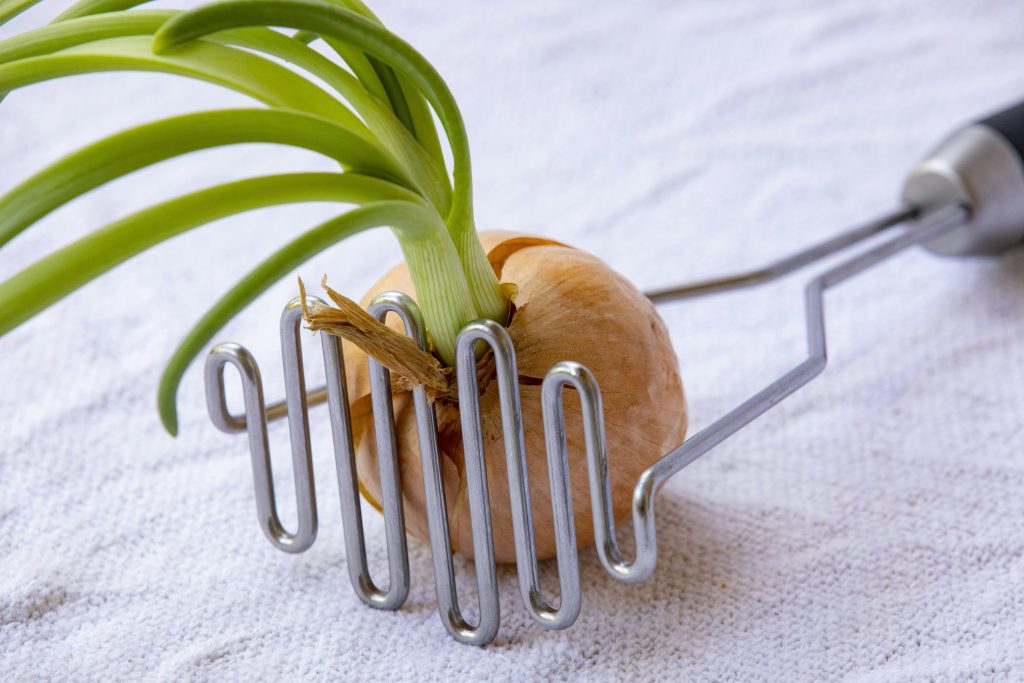
This image is property of images.unsplash.com.
Improper Planting
Planting Depth
Planting seeds at an incorrect depth can have a significant impact on germination rates. Seeds that are planted too deep may struggle to emerge from the soil surface, exhausting their energy reserves before reaching the sunlight necessary for growth. Conversely, seeds planted too shallow may not have sufficient contact with the soil, impeding water absorption and exposing the seeds to temperature fluctuations. Each seed type has its own recommended planting depth, and following these guidelines can greatly enhance germination success.
Spacing
Proper seed spacing is crucial for healthy plant growth. Overcrowding can lead to competition for resources such as water, nutrients, and sunlight, resulting in weak, spindly plants. Insufficient spacing can also contribute to the spread of diseases and pests, as good airflow between plants is limited. Following recommended seed spacing guidelines ensures that each plant has enough room to grow and thrive.
Soil Preparation
Preparing the soil correctly is vital for successful seed germination. The soil should be well-drained, loose, and free from debris that may impede seedling emergence. Compacted soil can restrict root growth and inhibit nutrient uptake, leading to poor germination rates. Tilling the soil, removing weeds, and incorporating organic matter can create an optimal environment for seed germination.
Planting Time
Choosing the right time to plant seeds is critical for maximizing germination rates. Some plant species require specific temperature ranges to germinate successfully. Planting too early or too late in the season may subject seeds to unfavorable conditions, reducing their chances of germination. Consult seed packets, gardening guides, or local agricultural extension services to determine the appropriate planting time for each seed type.
Seed Treatment
Chemical Treatments
Chemical treatments are often used to protect seeds from pathogens and pests or to enhance germination rates. Seed treatments may involve applying fungicides, insecticides, or growth regulators to the seeds. These treatments can help prevent diseases, control pests, and improve overall seed performance. However, it is important to follow the instructions carefully and consider the potential environmental impacts of the chemicals used.
Hot Water Treatment
Hot water treatment is a technique used to combat seed-borne diseases. By soaking seeds in hot water at specific temperatures and durations, fungal pathogens on the seed surface can be controlled or killed. Hot water treatment can be particularly effective in eliminating fungi such as damping-off pathogens that attack seedlings during germination.
Scarification
Scarification is a process that involves breaking, scratching, or weakening the hard seed coat to enhance water absorption and improve germination rates. Some seeds have a hard seed coat that can prevent water penetration, hindering germination. Scarification methods include mechanically scraping or filing the seed coat, exposing the inner layers and facilitating germination.
Stratification
Stratification is a technique used to overcome seed dormancy. It involves subjecting seeds to a period of cold temperature, mimicking winter conditions. This cold treatment helps break dormancy in seeds that require a cold stratification period to germinate. After stratification, the seeds are then transferred to a suitable environment for germination.

This image is property of images.unsplash.com.
Pathogens and Pests
Seed-borne Diseases
Seed-borne diseases are caused by pathogens that reside inside or on the seed surface. These pathogens can significantly reduce germination rates and seedling vigor. Planting infected seeds can lead to the spread of diseases throughout the garden or field. Treatments such as seed sterilization, hot water treatment, or fungicide application can help reduce the incidence of seed-borne diseases.
Fungal Infections
Fungal infections can affect seeds before and after germination. Fungi can infect seeds in the soil, causing rot and preventing germination. They can also infect emerging seedlings or young plants, causing damping-off and other diseases. Proper sanitation practices, well-drained soil, and avoiding overwatering can reduce the risk of fungal infections and promote successful seed germination.
Insect Damage
Insects can damage seeds, seedlings, and plants, leading to poor germination rates and compromised growth. Insects may feed on seeds, preventing germination, or attack emerging seedlings, causing damage or death. Integrated Pest Management (IPM) techniques such as monitoring, proper sanitation, and applying biological or chemical controls when necessary can help minimize insect damage and improve seed germination success.
Rodents and Birds
Rodents and birds can pose a threat to seeds, feeding on them or digging them up, resulting in reduced germination rates. Protecting seeds from rodents and birds with physical barriers or employing scare tactics can help minimize their impact on seed germination. Storing seeds in secure containers and planting seeds in areas less accessible to these animals can also prevent losses.
Competition
Weeds
Weeds compete with seeds for resources such as water, sunlight, and nutrients. They can outcompete seeds and inhibit their growth, resulting in poor germination rates. Proper weed management practices, such as timely removal, mulching, or using herbicides, can help reduce competition and promote successful seed germination.
Other Plants
Certain established plants can create unfavorable conditions for seed germination. They may release chemicals into the soil that inhibit or hinder seed growth. These allelopathic interactions can limit germination success. Proper spacing between plants and using companion planting techniques can help alleviate this competition and create a more conducive environment for seed germination.
Microorganisms
Microorganisms in the soil, such as bacteria, fungi, or nematodes, can interact with seeds and affect germination rates. Some beneficial microorganisms can improve seed germination by enhancing nutrient availability or protecting against pathogens. However, harmful microorganisms can cause diseases and reduce germination success. Maintaining healthy soil with proper organic matter content and avoiding waterlogging can help create a favorable microbial environment for seed germination.
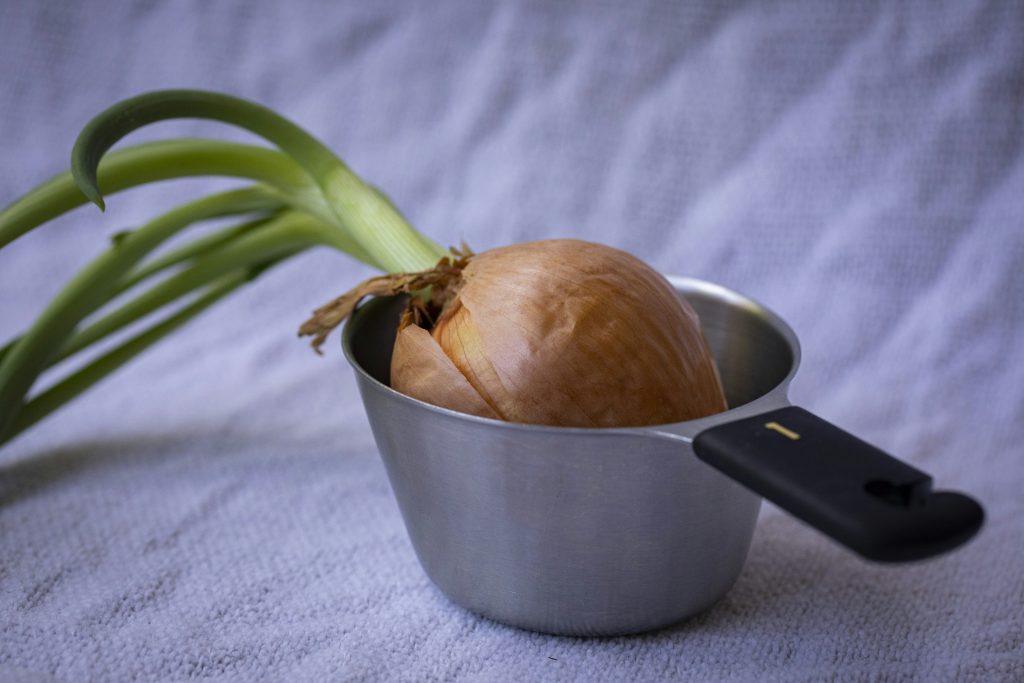
This image is property of images.unsplash.com.
Soil Conditions
Nutrient Deficiency
Seeds require adequate nutrients for successful germination and subsequent plant growth. Nutrient deficiencies can negatively impact germination rates and seedling vigor. Testing the soil for nutrient levels and ensuring a balanced nutrient profile can help address nutrient deficiencies and promote optimal seed germination.
Soil pH
Soil pH levels influence nutrient availability and can impact seed germination. Some plants prefer acidic soil conditions, while others thrive in alkaline or neutral conditions. If the soil pH is outside the preferred range for a particular seed species, germination may be compromised. Adjusting soil pH through the addition of organic matter or soil amendments can help create an optimal growing environment for seeds.
Compaction
Compact soil can restrict root growth, impede water infiltration, and limit nutrient uptake. Seeds planted in compacted soil may struggle to establish healthy root systems, leading to poor germination rates. Proper soil preparation, such as tilling or aerating, can alleviate compaction, allowing seeds to penetrate the soil easily and promoting successful germination.
Excessive Salinity
High levels of salt in the soil can negatively affect seed germination. Salt accumulation can hinder water uptake by the seed, leading to desiccation and failed germination. Choosing salt-tolerant seed varieties and implementing proper irrigation practices to avoid salt buildup in the soil can help prevent germination failure due to excessive salinity.
Genetic Factors
Incompatibility
Incompatibility between pollen and female reproductive structures can result in failed seed production and germination. Cross-pollination may occur between different plant varieties or species, resulting in hybrid seeds with reduced viability or sterility. Using genetically compatible seed sources or isolating different varieties can ensure successful germination.
Genetic Mutations
Genetic mutations can occur naturally or due to exposure to environmental factors like radiation or chemicals. These mutations can result in altered seed characteristics and reduce germination rates. Breeding programs and seed selection processes aim to eliminate undesirable genetic mutations and promote seed quality.
Hybrid Sterility
Hybrid plants, derived from the cross-pollination of different varieties or species, may exhibit hybrid vigor but have sterile or low-viability seeds. These sterile or low-viability seeds may fail to germinate, preventing further plant reproduction. Planting hybrid seeds often requires acquiring fresh seeds rather than relying on saved seeds from the hybrid plants.
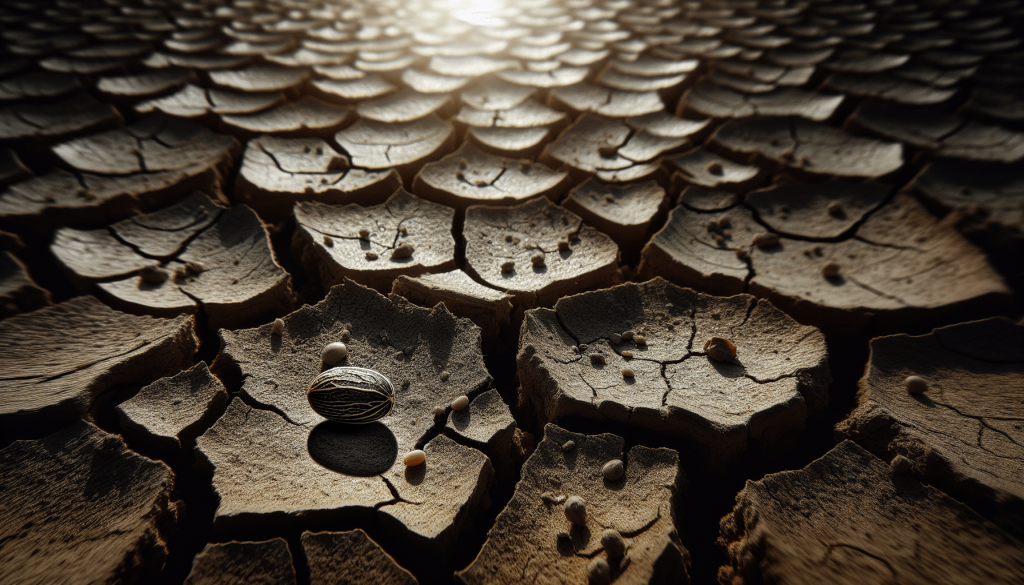
Human Error
Mislabeling
Incorrectly labeled seed packets can lead to confusion and failed germination. if the seeds planted are not what was intended or expected. It is essential to purchase seeds from reputable sources and verify that the seeds match the desired plant variety. Properly labeled seeds ensure that the correct planting instructions are followed, maximizing germination success.
Improper Storage
Improper storage of seeds can lead to decreased viability and germination rates. Seeds should be stored in a cool, dry, and dark environment to maintain their quality. Exposure to moisture, extreme temperatures, or sunlight can damage seeds and reduce their chances of successful germination. Storing seeds in airtight containers or sealed bags can help preserve their quality.
Overwatering
Although water is essential for seed germination, excessive watering can be detrimental. Overwatering can lead to waterlogged soil conditions, suffocating the seeds and preventing germination. It can also promote the growth of fungal pathogens, increasing the risk of damping-off diseases. Providing adequate but not excessive moisture is crucial for successful seed germination.
Overfertilization
Excessive fertilization can negatively impact seed germination. High concentrations of nutrients, especially nitrogen, can burn the seeds and inhibit germination. It is important to follow fertilization guidelines, avoid overapplication, and choose appropriate fertilizers for the specific seed type to prevent seed germination failure.
Natural Disasters
Frost
Seeds exposed to frost or freezing temperatures may suffer damage or death, resulting in failed germination. Cold-sensitive seeds should be planted after the danger of frost has passed. Protective measures such as using frost blankets, mulching, or planting cold-tolerant seed varieties can help mitigate the impact of frost on seed germination.
Drought
Seeds require adequate moisture for germination. Prolonged periods of drought can prevent seeds from absorbing sufficient water, leading to failed germination. Planting during a dry spell or in arid regions can increase the risk of drought-related germination failure. Adequate irrigation and choosing drought-tolerant seed varieties can help overcome these challenges.
Flooding
Excessive water due to heavy rainfall or flooding can drown seeds and hinder their germination. Flooded soil becomes waterlogged, depriving the seeds of oxygen. In addition, prolonged flooding can promote the growth of fungal pathogens detrimental to seed germination. Planting in well-drained areas or using raised beds can help prevent seed loss due to flooding.
Wildfires
Wildfires can destroy seeds, preventing them from germinating. Intense heat can damage or kill seeds, rendering them non-viable. Planting immediately after a fire can be challenging as the soil may be severely damaged. Natural regeneration or reseeding efforts may be required to restore vegetation in fire-affected areas.
In conclusion, successful seed germination depends on a variety of factors. Environmental conditions, seed quality, proper planting techniques, seed treatments, and management of pathogens, pests, competition, soil conditions, genetics, human error, and natural disasters all play crucial roles. By understanding these factors and implementing the appropriate measures, you can greatly enhance the chances of successful seed germination and ensure healthy plant growth.




